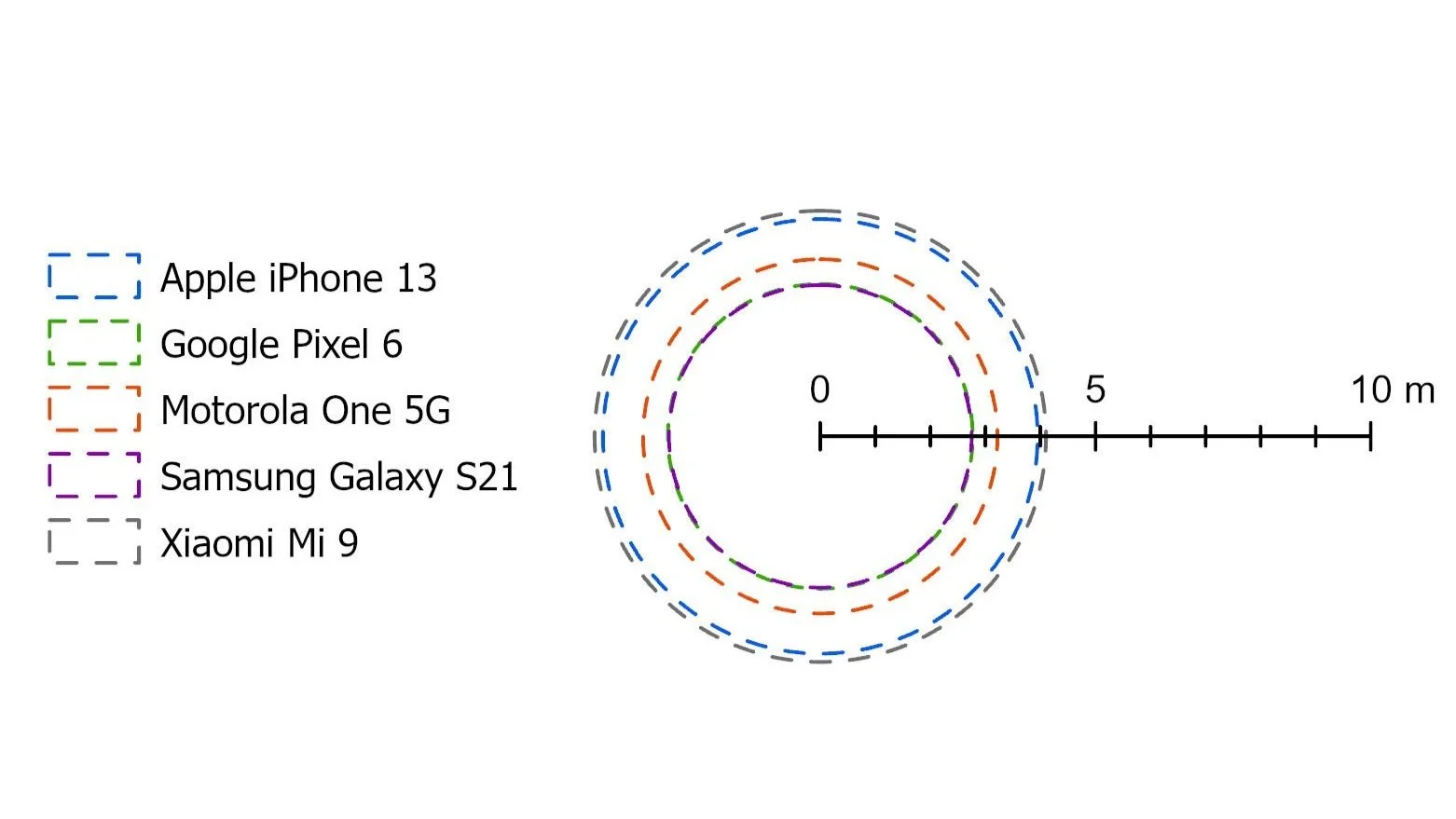With the advent of mobile GIS, more and more organisations are turning to mapping with their mobile phones. I mean, why not? Staff are often required to carry them for communications purposes, so why not leverage the GNSS device located inside for your mapping?
One comment we often hear, is that the accuracies are poor. But are they? We’ve compiled some data on the horizontal accuracies of some popular, late-model (as of the time of writing) mobile phones below so that you can compare for yourself.
The fine print
We didn’t do these tests ourselves. Rather, we referenced data published by the USDA Forest Service who tested these devices under a range of tree canopy conditions. The data presented below is:
From 60 positions, averaged.
Without an external antenna.
With a WAAS real time correction (unless specified otherwise).
Using GPS and Glonass.
With no post processing involved.
The tests are reported as being conducted using Geospatial Positioning Accuracy Standards: Part 3: National Standard for Spatial Data Accuracy (NSSDA Standards).
Additional Notes:
The NSSDA Horizontal Accuracy calculates a 95% confidence level (i. e. 95 out of 100 times the GPS accuracy will be equal to or better than NSSDA calculated distance from the true location).
Some results are an average of more than one test run.
Data is collected after allowing sufficient time for the GPS device to acquire a current almanac and ephemeris data.
We took the reported horizontal accuracy under the conditions presented above and applied a buffer equal to the horizontal accuracy, to represent the accuracy as a circle around the central position. This is intended to be a visual aid, as many people are familiar with the accuracy bubble that appears around a user’s location on mobile mapping applications.
The Phones
The phones we present data for are:
Apple iPhone 13 (2021)
Google Pixel 6 (2021)
Motorola One 5G (2020)
Samsung Galaxy S21 (2021)
Xiaomi Mi 9 (2019)
The Results
The Apple iPhone 13 shows a very even degradation in reported accuracy, based on the level of canopy cover. In the open sky it reports an accuracy of 3.95 m. Under a heavy canopy, this degrades to 8.6 m.
The horizontal accuracy of the Apple iPhone 13 under a range of canopy conditions.
In an open sky setting, the Google Pixel 6 reports the best horizontal accuracy of the devices presented, with an accuracy of 2.7 m. The heavy/closed canopy accuracy of 4.19 m is also better than all other devices listed here for light/medium canopy conditions.
The horizontal accuracy of the Google Pixel 6 under a range of canopy conditions.
The Motorola One 5G has a horizontal accuracy of 3.22 m in an open sky situation. Though, introduce trees and that degrades to greater than 6 m. The device doesn’t appear to be heavily affected by the density of the canopy cover as light and heavy canopy conditions report similar accuracies.
The horizontal accuracy of the Motorola One 5G under a range of canopy conditions.
The Samsung Galaxy S21 is the closest match to the Google Pixel 6, with an open sky horizonal accuracy of 2.75 m. Similarly to the Motorola, the device doesn’t appear to be heavily impacted by the amount of canopy cover, with light and heavy canopy cover accuracies being very similar.
The horizontal accuracy of the Samsung Galaxy S21 under a range of canopy conditions.
And finally, the Xiaomi Mi 9 with an open sky horizontal accuracy of 4.1 m, ballooning out to 12.03 m under heavy canopy cover conditions. Of the devices presented, this is the only device that did not utilise a Satellite Based Augmentation System (SBAS) in its position, which seems to have had a significant impact on its location accuracy, particular under heavy canopy.
The horizontal accuracy of the Xiaomi My 9 under a range of canopy conditions
Conclusion
Based on open sky conditions, the Google Pixel 6 has the best position accuracy at 2.7 m, followed very closely by the Samsung Galaxy S21 at 2.77 m. The Motorola One 5G comes next at 3.22 m, and the Apple iPhone 13 trailing that at 3.95 m. Bringing up the rear, but not that far behind the iPhone 13 is the Xiaomi Mi 9 at 4.1 m.
The horizontal accuracies of all five mobile phones presented, under open sky conditions.
All devices listed here today have an open sky horizontal accuracy better than or equal to 4.1 m. For many real-world applications, this is great accuracy and suitable for many organisations mapping, location or GIS needs. If you require better than 3 m accuracy, the brand of device and conditions becomes of critical importance. And if you want less the 2 m accuracy, you’d better get a dedicated device.
The location accuracy won’t be your primary decision factor when purchasing a mobile device, but given the wide range of results, it should be on the list.
Streamline your organisations workflow with mobile GIS. Reach out to our team to discuss.







